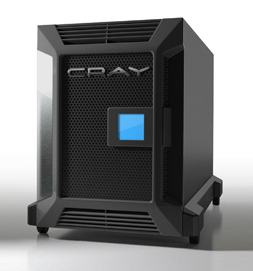You'd Need a 1 Petaflop to Score #20 Rank in Top 500 List
The U.S. has reclaimed dominance in the list of the 500 fastest supercomputers of the world.
However, while DOE's Sequoia now stands on top, the surprise may be that a powerful petaflop supercomputer is now merely enough to land you a spot behind the first 20.
Sequoia towers the new list with almost 1.6 million processing cores. With a peak performance of 20.1 petaflops, it has nearly twice the capability of second place K computer with 11.3 petaflops -- though it consumes significantly less power with 7.9 MWatts versus 12.7 MWatts. DOE Mira rounds out the top 3 and is a clone of Seqoia, albeit with half the processing cores, half the processing capacity and half the power consumption.
China's Tianhe-1, which shocked the supercomputing world in November 2010 with 4.7 pflops peak performance has already dropped to the number 5 spot on the list. DOE's Roadrunner was the world's first petaflop supercomputer and made its debut on the June 2008 list. In just four years, the industry was able increase the maximum performance by a factor of 15 and the sustained performance by 16. The increase on the bottom of the list climbed at a slower ratio: Back in June 2008, a supercomputer had to post a sustained performance of at least 9 teraflops to make the list. The latest edition required 60.8 TFlops.
Get Tom's Hardware's best news and in-depth reviews, straight to your inbox.

Douglas Perry was a freelance writer for Tom's Hardware covering semiconductors, storage technology, quantum computing, and processor power delivery. He has authored several books and is currently an editor for The Oregonian/OregonLive.
-
vmem TheWhiteRose000Can it play Crysis?Reply
would be cool for it to play a life-size 3D projection of crysis :P -
K2N hater What the article doesn't spot is that building a supercomputer is rather cheap nowadays through GPU processing.Reply -
alidan 9tflop?Reply
what are we at right now with single gpu alone (can have multi gpus, but just 1 card) is it 5 or 6tflop?
a single high end computer to day has the power of a super computer level computer just 4 years ago.
with that being said, these are the fastest computers that we know about, key word, KNOW ABOUT.
i have no doubt that we don't have faster computers that are just not talked about.
